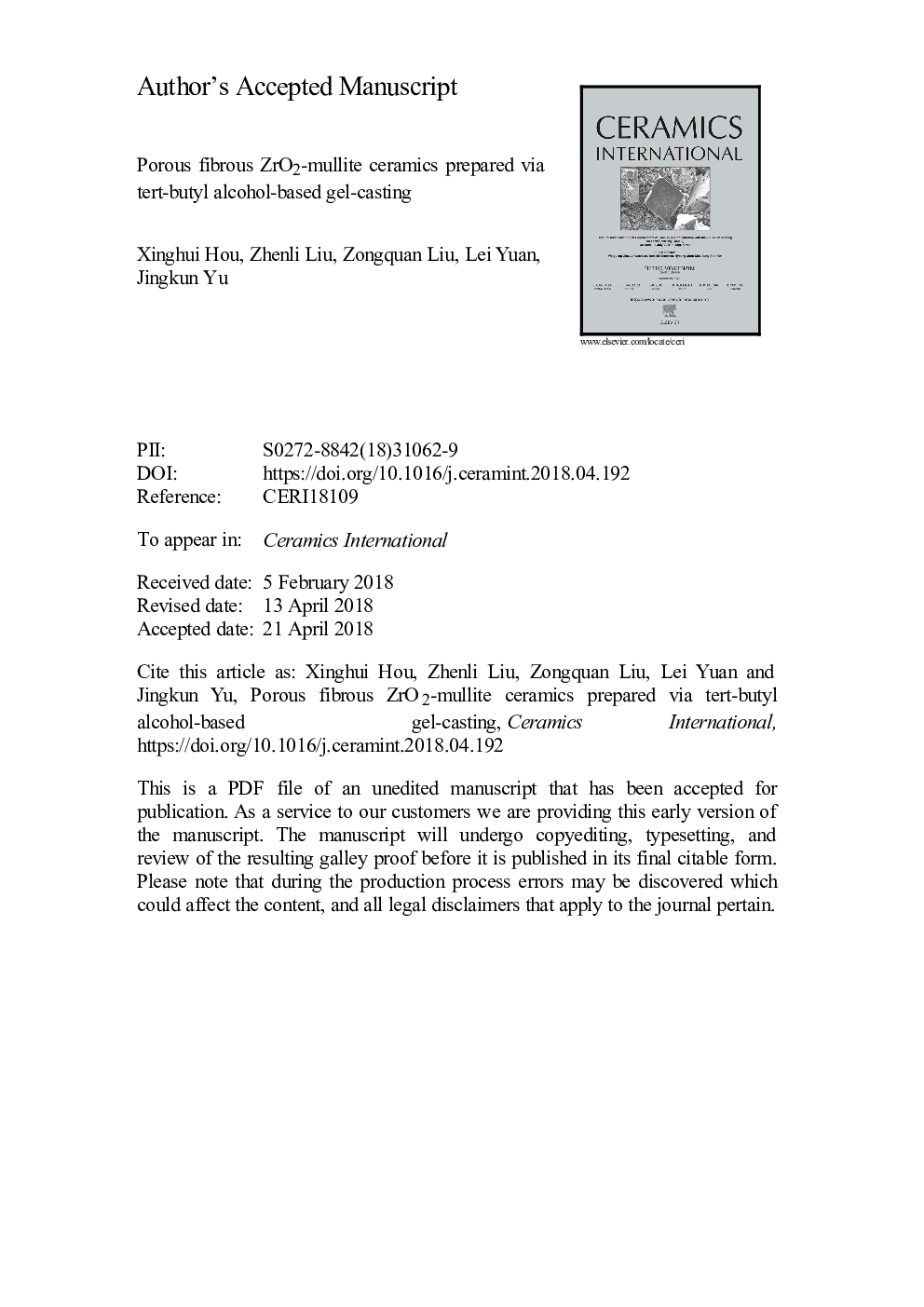| Article ID | Journal | Published Year | Pages | File Type |
|---|---|---|---|---|
| 7886317 | Ceramics International | 2018 | 20 Pages |
Abstract
Mullite fiber was used to fabricate ZrO2-mullite based porous ceramic via tert-butyl alcohol (TBA)-based gel-casting process using zirconite and bauxite as raw materials. Phase compositions, microstructure, pore size distribution, linear shrinkage, bulk density, apparent porosity, thermal conductivity, and compressive strength were analyzed to investigate influences of mullite fiber content and added Y2O3 on prepared porous ceramics. Results show that bird nest-like three-dimensional fibrous reticular skeleton structure was constructed with mullite fibers that evenly enwrapped rod-like mullite and ZrO2 grains. Prepared porous fibrous ZrO2-mullite ceramics had narrow pore size distribution that consisted of mullite and m-ZrO2. With an increase in mullite fiber content, linear shrinkage and bulk density decreased, apparent porosity increased, and relatively good thermal conductivity was obtained. In addition, added Y2O3 reacted with Al2O3 and SiO2 to form Y-Al-Si-O glass phase, which promoted sintering and densification of the ceramic, thus improving its compressive strength.
Keywords
Related Topics
Physical Sciences and Engineering
Materials Science
Ceramics and Composites
Authors
Xinghui Hou, Zhenli Liu, Zongquan Liu, Lei Yuan, Jingkun Yu,
